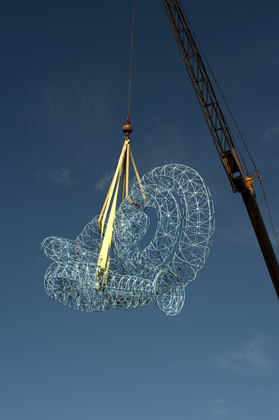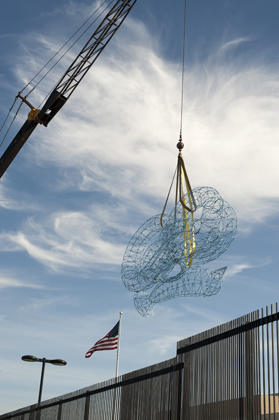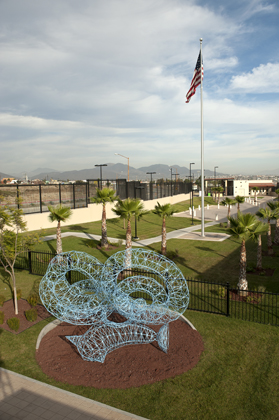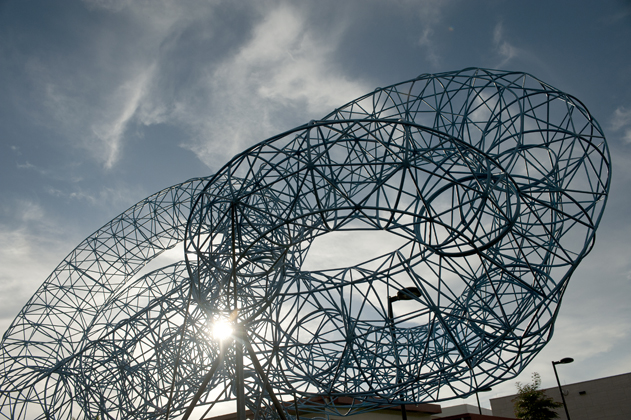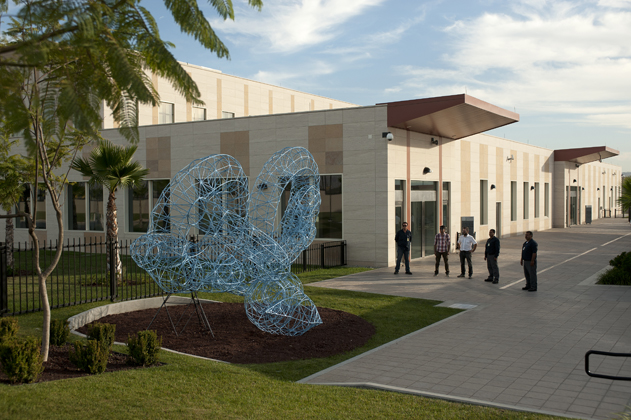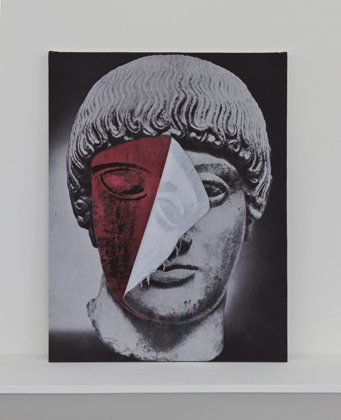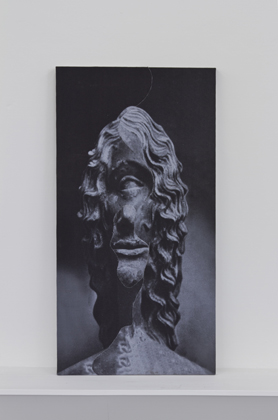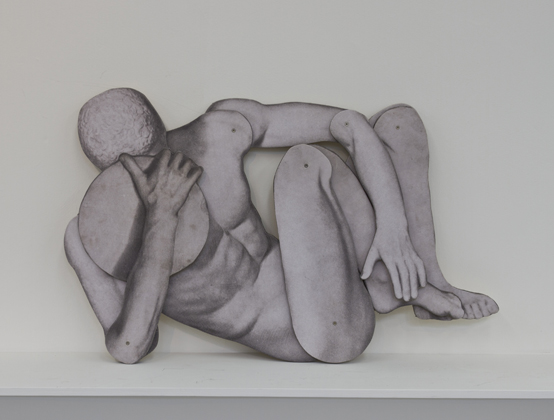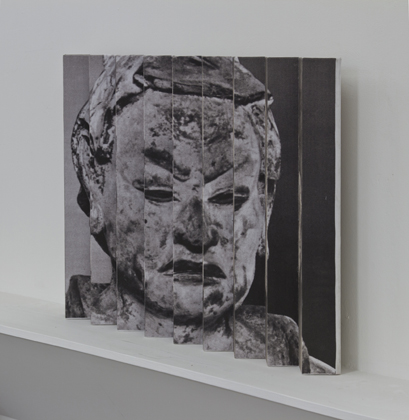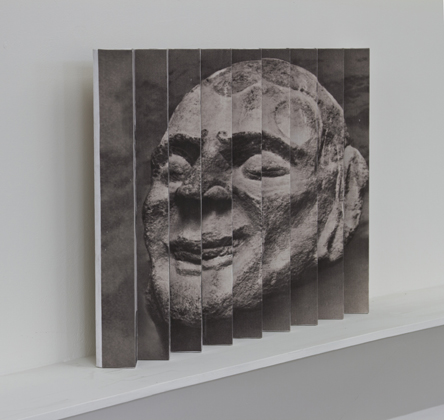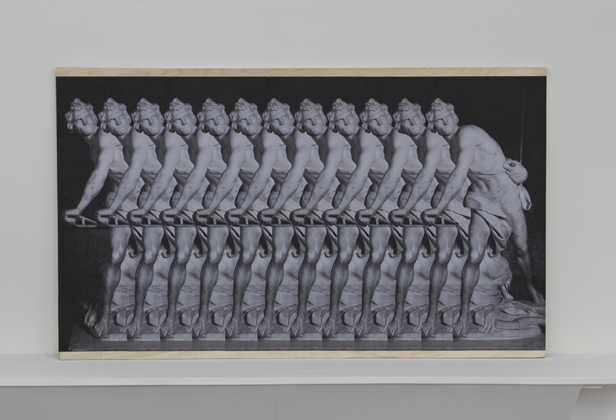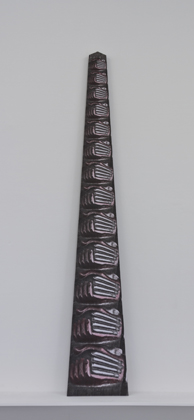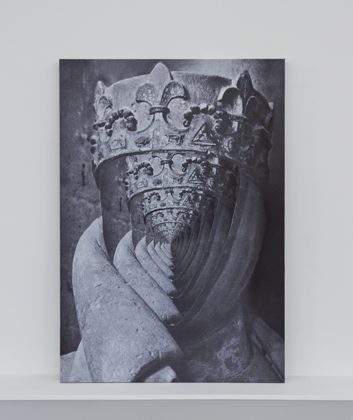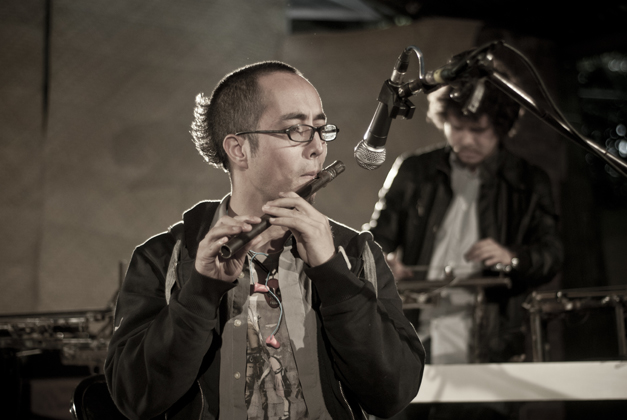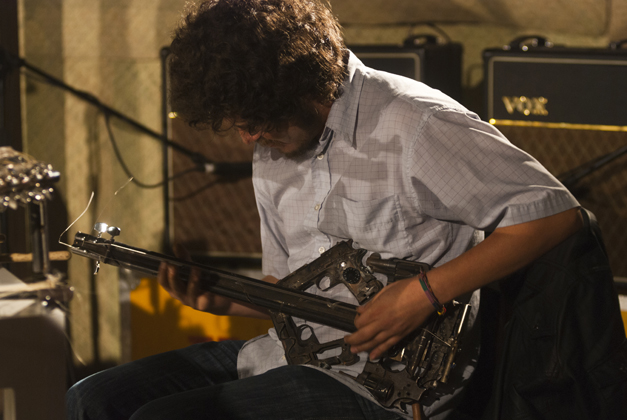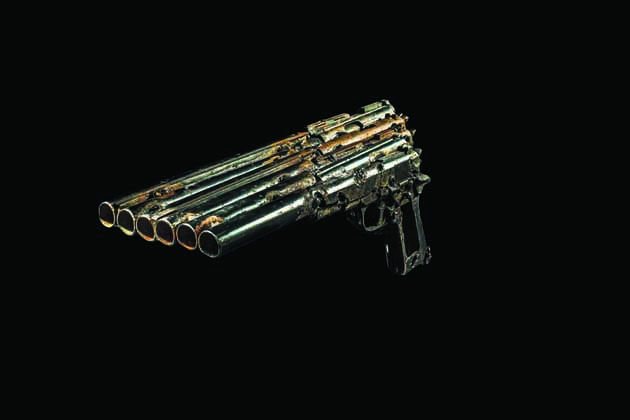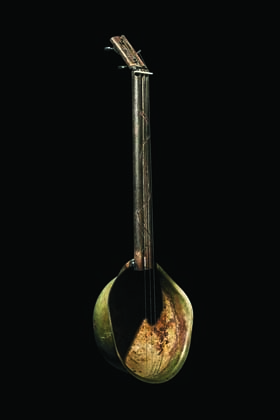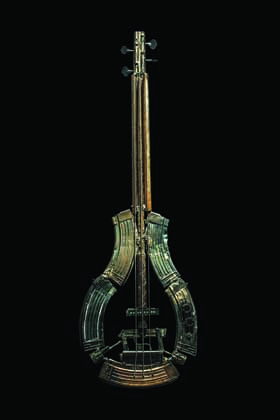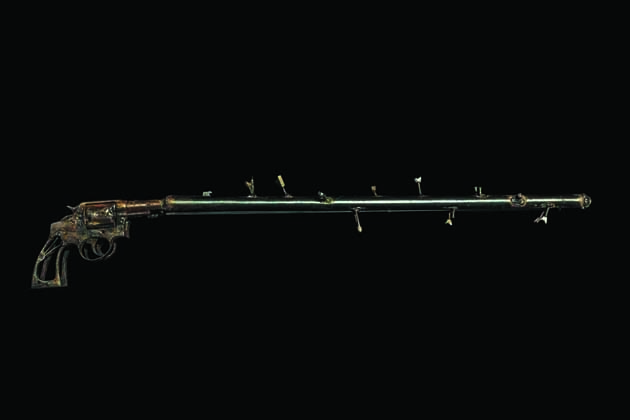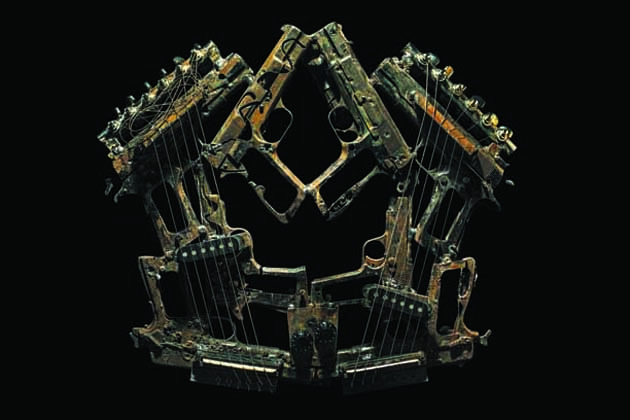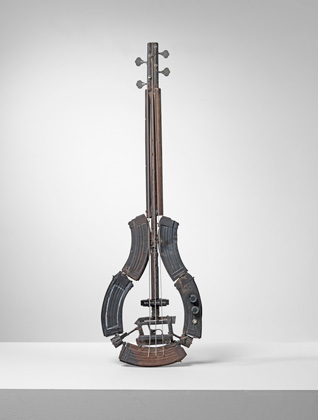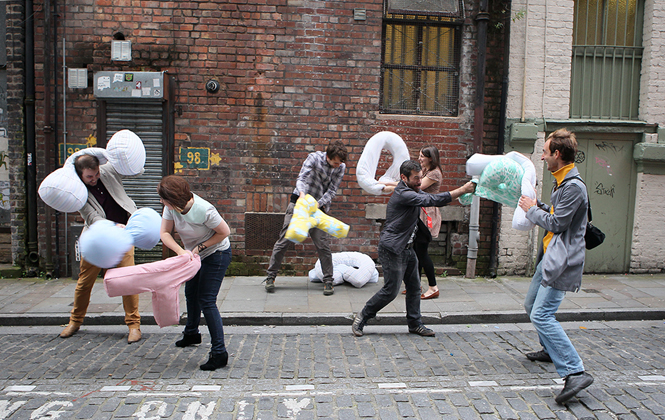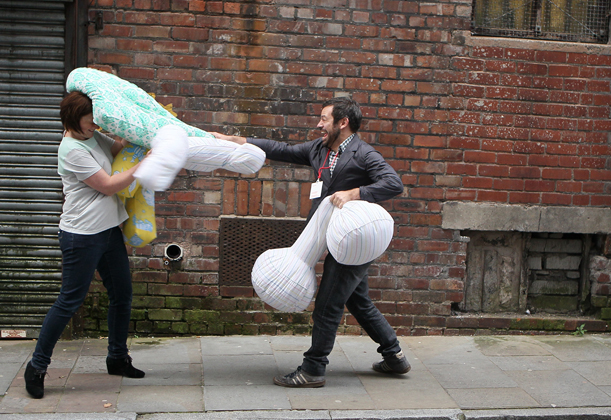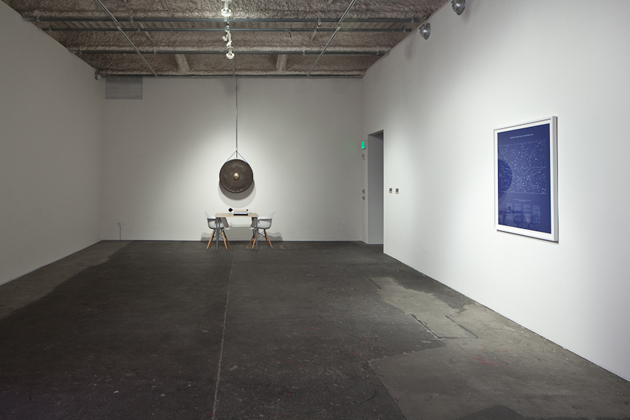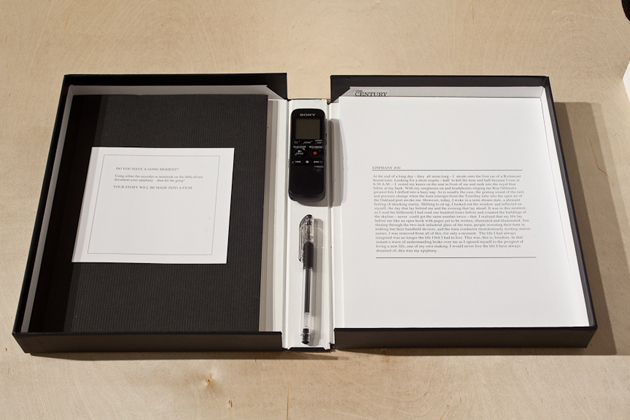| PEDRO REYES |
|
Metal frame
AiE (Art in Embassies), Tijuana
2012
|
|
The Tijuana/San Diego border is the busiest frontier in the world, on an average day 20,000 people cross between the two cities. I was asked to think of an outdoor sculpture for the US consulate in Tijuana as part of the US Department of State's Art in Embassies program.
I thought it was appropriate to approach cultural diplomacy from an alternative angle, focusing not on what each country has to say, but what they ought to hear. The sculpture became then an anatomically accurate model of the inner-ear, amplified one thousand times. The piece was then installed at the entrance and greets both Mexican and US citizens who visit the consulate.
Images courtesy of Michael J.N. Bowles |
|
Rompecabezas, Labor Gallery
2012
|
|
How to overcome your fear of painting, is a series of 20 pictures that have all been subject to a different operation. I approached painting with my own means calling them 'flat sculptures'. Literally, the statue has lost one of its dimensions, only to recover its depth in the potential permutations of its bi-dimentional cluster.
An analogy akin to the phrase Luis Cardoza y Aragón used in Pintura contemporánea de México(1950) to describe art criticism: '...the Venus de Milo holding the head of the Victory of Samothrace in her hands'.
Images courtesy of Labor Gallery |
|
Performance. Destroyed weapons, metal parts, strings
Proyecto Liquido, Alumnos47, Mexico City Gwangju Biennial, South Korea Istanbul Design Biennial, Turkey Lisson Gallery, London
2012
|
|
Imagine is a set of 50 musical instruments fabricated out of destroyed weapons - revolvers,shot-guns, machine-guns, etc. This work is a progression of Palas por Pistolas (2008), where 1527 weapons were melted and made into the same number of shovels to plant 1527 trees. In April this year I got a call from the government who had learned about Palas por Pistolas, they told mea public destruction of weapons was to take place in Ciudad Juarez and asked me if I was interested in keeping the metal, which would otherwise have been buried as usual. I accepted the material but I wanted to do something new this time. 6700 weapons, cut into parts and rendered useless, were given to me and I set out to make them intoinstruments.
Funded by Alumnos47 and curated by Jessica Berlanga, a group of 6 musicians worked for 2 weeks shoulder-to-shoulder turning these agents of death into instruments of life. The task was challenging but they succeeded in extracting sounds, from percussion to wind and string. It's difficult to explain but the transformation was more than physical. It's important to consider that many lives were taken with these weapons; as if a sort of exorcism was taking place the music expelled the demons they held, as well as being a requiem for lives lost.
This is also a call to action, since we cannot stop the violence only at the place where the weapons are being used, but also where they are made. There is a disparity between visible and invisible violence. The nearly 80,000 deaths by gun-shot that have occurred in Mexico in the last 6 years, or the school shootings in the US are the visible side of violence. The invisible side is gun trade-shows, neglecting assault rifle bans, the shareholder profit from public companies. This is a large industry of death and suffering for which no cultural rejection is expressed.Guns continue to be depicted as something sexy both in Hollywood and in videogames; there may be actors who won't smoke on the screen, but there has not been one who would reject the role of a trigger-happy hero. In the last century there has been organized movements for gay rights, gender and race equality and the environment, yet we still need to express our desire for a world without weapons. Living in a community free of guns ought to be a human right. Many liberties that we enjoy today were considered utopian, and the first step taken into that direction was to Imagine. Alumnos47. Comisión y producción Jessica Berlanga Taylor. Curadora de Proyecto Líquido para Alumnos47. Emiliano García y Marcelo Rangel Valenzuela. Coordinación de producción Jazmín Zepeda. Coordinación y dirección musical Omar Córdova. Adrián López. Alonso López. José Mena. Leika Mochan. Daniel Zepeda. Músicos y diseñadores de instrumentos. Antonio García Salinas. Herrero artesano Arturo Quiroz. Herrero artesano Images courtesy of Alumnos47 Foundation, Revista 192 and Lisson Gallery |
|
Rompecabezas, Labor Gallery
2012
|
|
Los Mutantes is a work comprised of 170 plates that combine characters from ancient and modern mythologies. Similar to a periodic table, the origin of myths is organized by an axis in which animals and objects are combined with humans (male or female), providing a rational framework for the irrational products of human imagination.
A cartesian matrix like this needs to follow certain rules. All figures are half-human, half-something. Characters that talk, such as Fritz the Cat or Donald Duck, are excluded, as well as oddities and chimeras without recognizable human features.
Images courtesy of Labor Gallery |
|
Rompecabezas, Labor Gallery
2012
|
|
When left alone, both chairs in their present positions also seem to be in the middle of a sign-language conversation.
Images courtesy of Labor Gallery |
|
Group activities, posters
Commissioned by Liverpool Biennial and FACT
2012
|
|
A true game is one that frees the spirit. Although often we use the words interchangably, there is a subtle difference between 'play' and 'games'. Play is unrestricted; games have rules. Play may merely be the enactment of a dream, but in each game there is a contest. If you see how children play, games are often extraordanirly naive or highly civilized. They rarely trouble themselves to keep score, and little significance is attached to who wins or loses; it does not seem to worry them if a game is not finished.
GENE RAL RULES :
1. Everybody who plays a game gets a poster. 2. There is no limit to the number of games you can play. 3. Even if nobody is watching, don't cheat! You can't take the poster unless you have played the game! 4. For some games you need a partner - don't be shy to ask strangers to join you. 5. Feel free to play the games inside or outside, but bring the props back to the space after playing. 6. The fun doesn't stop here - you can play the games with your friends and family at home. MELODRAMA This game is loosely based on 'Snakes and Ladders', which originated in 16th century India. The game was meant to teach the dynamics of karma in which a positive action would move you up the ladder toward enlightenment, while destructive behaviours would move you down a snake, the lowest form of incarnation according to Indian mythology. The number of ladders was purposely less than the number of snakes as a reminder that the path of self-realisation is much more difficult to lead. Following a similar structure MELODRAMA takes the player through the journey of romantic love, on this occasion inspired by Greek mythology. The journey is a tricky one, punctuated by Cupid's arrows that either move you up or down the board. Cupid, the classical god of desire, love and affection, carried two kinds of arrows: a quiver of gold-tipped arrows to inspire true love in his victims, and a set of lead-tipped arrows for stirring up feelings of hatred or distaste. In this game, the chance operation of throwing the dice is equivalent to Love's blindness. Will you fall prey to Cupid's wrath or will you find yourself lying next to your true love? INSTRUCTIONS 1. Players move across the board from square 1 to 100. The first player, who reaches square 100, wins. 2. Players roll the dice once. Whoever throws the higher number gets the first move. Each player throws the die and moves the number of squares indicated on the die (2-12). Players may only roll once for each turn. 3. Lead arrow: If a player lands on the tail of a lead arrow, his or her marker slides down to the square at the tip of the arrow. Golden arrow: If a player lands on a square at the tail of a golden arrow, his or her marker moves up to the square at the tip of the arrow. 4. The first player to land on the square 100 is the winner. If a player overshoots square 100, he or she must back track the number of spaces overshot. A player wins only by rolling a number that lands them on the 100 mark exactly. |
|
Rompecabezas, Labor Gallery
2012
|
|
This volcanic stone sculpture has various perforations in which one can insert additional stone carvings of eyes, noses, ears, hair, mouths, and other body parts. the sculpture thus becomes a kind of puzzle that continuously changes form depending on the various interactions with the public. This piece, titled Pico della Mirandola, is the beginning of a new series of sculpture portraits.
This work was inspired by a conversation with Antanas Mockus (see p.x); while we talking about the notion of social sculpture we mentioned the Italian Renaissance philosopher, who articulates the concept of man in the following passage, 'All creatures are brought into the world completed.
except for man who was left unfinished: You will be able to make out of yourself what you will. If you wish to be like the beasts, you will be a beast; if you wish to be like the angels, you will be like an angel. no specific form or function has been assigned to you.'
This volcanic stone was known for it's use in pre-Columbian times to make idols and pyramids. Because of it's hardness it's also used for the making of metates and molcajetes - stone utensils to grind corn which have been in use since 3000 years ago. |
|
CCA Wattis, San Francisco
2012
|
|
Images courtesy of CCA Wattis |
